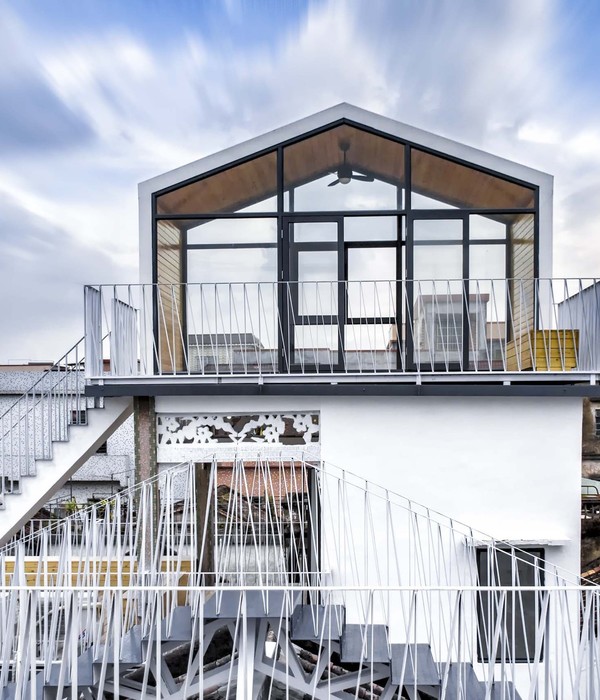Architects:Amruta Daulatabadkar Architects adaa
Area :27345 ft²
Year :2022
Photographs :phxindia
Lead Architect :Amruta Daulatabadkar
Structural Designer : Anil Datar
Civil Contractor : Mr.Thorat
Carpenter : Mr.Khan
Painter : Vijay Nishad
Plumber : Mr.Aneej
Fabricator : Sameer Shaikh
Tiles : Angad, Mohanlal
Glass : Sajjan Singh
Electrician : Krishna Kharat
City : Chhatrapati Sambhaji Nagar
Country : India
Situated on a small plot on the outskirts of Aurangabad city, the Late Vamanrao Pitambare Institute is a building that caters to higher secondary and undergraduate students from the city and neighboring villages. Located adjacent to a highway outside the city, the context is a sparsely built neighborhood, with a few residential and commercial establishments, and many unbuilt plots with wild vegetation and trees. One can enjoy from here, the views of hills and greenery in the distance.
To conversate with the openness around, the institute is designed as an open mass that is connected to the outsides as well as the insides. The design is a composition of overlapping horizontal planes and cuboidal blocks, juxtaposed with bold vertical and horizontal connectors to create a building that celebrates connectivity, and openness. The massing is designed to ensure shade and breeze across the building. The visually staggered mass created with playing in heights opens out on the north facade to take in glare-free light and has communal open spaces viz. the courtyard and terraces that are shaded throughout the day. Voids across the four facades ensure maximum cross ventilation and thermally comfortable spaces.
One enters the building through a wide staircase that takes the user directly to the first-floor level in the courtyard. This level caters to everybody who visits the institute, from the students, and the staff to the visitors. The functional spaces are arranged around the communal courtyard, with two staircases and a corridor forming a central circulation spine on the east-west axis. The library sits on the southeast corner inviting morning sunlight through a seamless window and skylights, created such as to connect with the staircase beside. the principal’s cabin is a glass box that overlooks the courtyard and the admin block sits like an island surrounded by corridors on four sides to facilitate student-staff interactions. The upper floors have classrooms with large windows on the northern facade and breakout terraces that are exclusive to the students with inserts like a Saraswati statue or amphitheater-like seating. The stilt floor and the basement host additional learning and gathering spaces.
The spaces are crafted to ensure a choreography where one feels invited, as the mass opens out towards the entry and the wide staircase shaded by the huge cantilever makes for a grand & dynamic entry experience. While entering one is never disconnected from the outdoors and as they traverse ahead through the spaces, the architecture beautifully composes frames that capture the colorful tree foliage around or the beautiful hills in the distance, one after the other. Every space gives a glimpse of the other, which culminates into a wholesome experience for students, as the connectivity throughout the spaces fosters engagement and interactions. The continual dialogue with the outdoors gives the students a sense of respite in the possibly challenging educational environment.
The massing blocks with varied heights are detailed with punctures, large windows, and skylights to infuse quality light, views, and airflow in the spaces. The horizontal planes viz the courtyard and breakout terraces have varied seating spaces that induce informal occupancy. These seating spaces are fused with landscape adding a sense of biophilia. The wide staircases placed at the cores provide visual connectivity across the building as well as to the outsides and hence serve as additional breakout spaces for the students. The material palette is minimal, with a balance of unfinished concrete, kota stone, and plaster finishes that are uniform and rough, giving a raw character to the building. Pop of color through art, furnishings, and landscape adds a sense of zest for the students. The open building is thus an attempt to create a space for learning that connects the students to every experience.
{{item.text_origin}}












